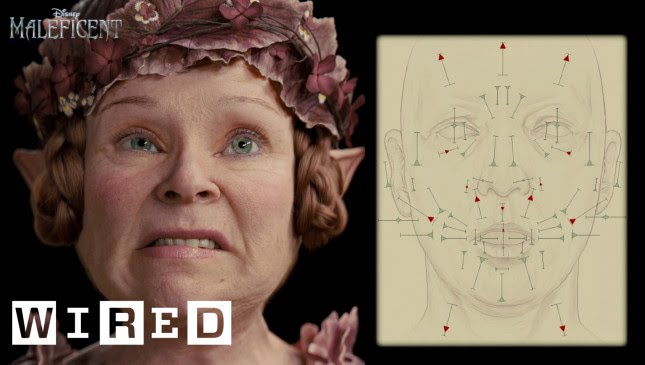The Great Apes of the Planet of the Apes Trilogy
Summary
Dr. Tara Stewinsk, CEO and Chief Scientific Officer of the Dian Fossey Gorilla Fund, discusses the four great apes- chimpanzees, gorillas, orangutans, and bonobos, featured in the Planet of the Apes trilogy. She notes that while humans are considered great apes, there are eight species, but the four most familiar species are the chimpanzee, gorilla, orangutan, and bonobo. The article highlights the characteristics and behavioral traits of each species, including communication methods and their unique cultures. With conservation efforts, great ape populations in the wild, which humans pose the greatest threat to, can be preserved.
Table of Contents
- Chimpanzees: Communication, Bonding, and Culture
- Bonobos: Docile Great Apes
- Gorillas: Gentle Giants of the Great Apes
- Orangutans: Intelligent and Unique
- Humans: The Fifth Great Ape
- Conclusion: Protecting Great Ape Species
Introduction
In the Planet of the Apes trilogy, the great apes are showcased as intelligent and complex creatures. In reality, these creatures have remarkable social lives and unique cultures that make them fascinating to study. Dr. Tara Stewinsk, CEO, and Chief Scientific Officer of the Dian Fossey Gorilla Fund, shares insight into the great apes’ different species’ physical characteristics and behavior.
Q&A
Chimpanzees: Communication, Bonding, and Culture
-
Q: Why are chimpanzees the most prominently featured apes in movies and television shows?
A: Chimpanzees are the most prominently featured apes in movies and television shows because:- They are the most familiar to humans and have the closest genetic makeup to humans than any other great ape.
- They communicate through both vocal and gestural communication and have been taught sign language in the past.
- Chimpanzees have a linear dominance hierarchy and compete to be dominant, which can make for interesting plotlines.
Bonobos: Docile Great Apes
-
Q: How are bonobos different from chimpanzees?
A: Bonobos are slightly smaller than chimpanzees, and they are found only in the Democratic Republic of the Congo. Bonobos have a reputation for being more pacifist than their close relatives, chimpanzees. They tend to resolve conflicts non-violently through grooming, sex, and food-sharing. -
Q: What is the difference in communication between bonobos and chimpanzees?
A: Both chimpanzees and bonobos use vocal communication, but bonobos tend to use higher-pitched vocalizations compared to chimpanzees. Bonobos also use facial expressions and gestures to communicate and have been taught to use symbols to communicate with humans. -
Q: How do bonobos live in their natural habitat?
A: Bonobos live in the rainforests of the Democratic Republic of the Congo. They live in large social groups, and females often hold dominant roles in their communities.
Gorillas: Gentle Giants of the Great Apes
-
Q: How are gorillas different from other great apes?
A: Gorillas are the largest of the great apes, typically weighing up to 400 pounds. They are strict vegetarians and are known as gentle giants. Gorillas do not exhibit aggression towards humans in the wild. -
Q: Can you describe gorilla behavior?
A: Gorillas often live in a family unit with one dominant male, or silverback, who takes on the responsibility of protecting and guarding the family unit. Male gorillas are protective of young infants and allow them to feed near them. Gorillas’ social behaviors include grooming, playing, and nest-building. -
Q: Are there any white gorillas in the wild?
A: There are no observed white gorillas in the wild. Some gorillas have gray hair that can give the impression of white hair against their black skin.
Orangutans: Intelligent and Unique
-
Q: What makes orangutans unique among the great apes?
A: Orangutans are unique among great apes in several ways, including:- They are only found in Asia, with three different species.
- They are primarily solitary individuals.
- Males have cheek pads around their faces and emit loud calls to communicate.
Humans: The Fifth Great Ape
-
Q: How are humans similar to the great apes?
A: Humans and great apes share similar emotions and relationships. Humans are considered a type of great ape due to their genetic similarity to chimpanzees, bonobos, gorillas, and orangutans, who share a common ancestor. -
Q: What is the greatest threat to great apes’ populations in the wild?
A: Humans pose the greatest threat to great ape populations. Activities such as deforestation, poaching, and illegal trade contribute to the decline of great apes in the wild.
Conclusion
The great apes featured in the Planet of the Apes trilogy are portrayed as intelligent and complex creatures. In reality, great apes, such as chimpanzees, gorillas, orangutans, and bonobos, have remarkable social lives and unique cultures that make them fascinating to study. Efforts to protect great ape populations in the wild can be made by avoiding activities that threaten their habitat and educating people on the importance of conservation efforts. By taking these steps, we can help preserve these amazing creatures’ lives and their future generations to continue living in the wild.







